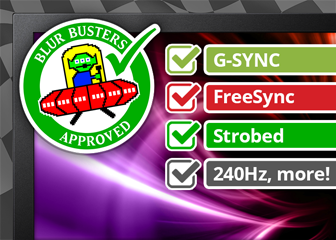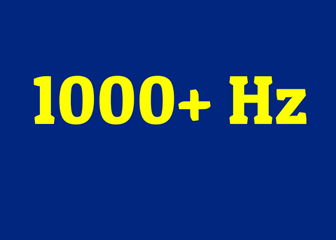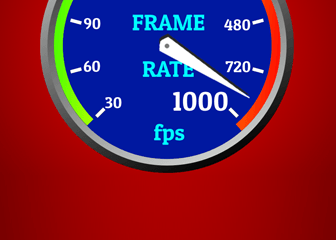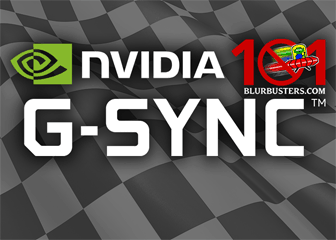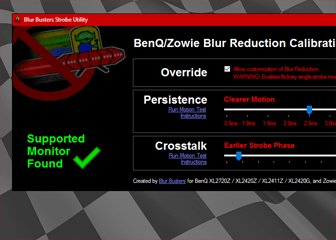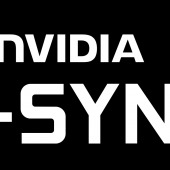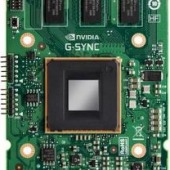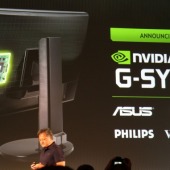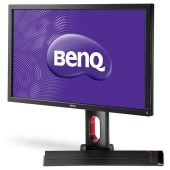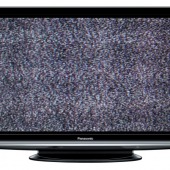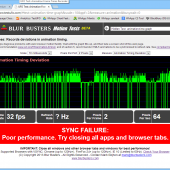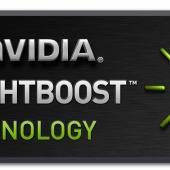Archive
It is observed NVIDIA G-SYNC is also useful for low-latency fixed refresh rate applications as well: It accelerates frame delivery from GPU to monitor: Frames are delivered from GPU to monitor in 1/144sec instead of 1/60sec when running at 60Hz!...
Read more
Motion Blur from Display Persistence, not GtG Transitions
John Carmack of iD Software recently talked about persistence at the G-SYNC launch. Modern LCDs now create more motion blur from persistence (static pixel state) and not from transitions (grey-to-grey). Transitions now take only a fraction of a refresh. Pixels are mostly static...
Read more
G-SYNC monitors supports strobing at 85Hz and at 144Hz
UPDATE: This is old information, posted before G-SYNC was released. Blur Busters now has a G-SYNC monitor (see Our Preview of G-SYNC) with ULMB. 85Hz strobing is confirmed, however, 144Hz strobing is not available. Good news for people who want “LightBoost”...
Read more
ASUS VG248QE is upgradeable to G-SYNC
If you already purchased an ASUS VG248QE monitor, or buying it now, you are in luck. The ASUS VG248QE monitor is upgradeable to G-SYNC. Blur Busters plans to publish a G-SYNC Mod Walkthrough, once our G-SYNC upgrade board...
Read more
How Does NVIDIA G-SYNC Fix Stutters?
People are very surprised that you can have a fluctuating framerate without seeing any erratic stutters. But, surprisingly, it is possible on a variable-refresh-rate display such as NVIDIA G-SYNC! These diagrams explain why NVIDIA G-SYNC eliminates stutters, from the human...
Read more
CONFIRMED: nVidia G-SYNC includes a strobe backlight upgrade!
When Andy of nVidia was asked whether LightBoost could be combined with G-GSYNC, AndyBNV of nVidia confirmed on NeoGaf: “We have a superior, low-persistence mode that should outperform that unofficial [LightBoost] implementation, and importantly, it will be available on every...
Read more
NVIDIA G-SYNC: Variable Refresh Rate Monitors!
One small step closer to tomorrow’s Holodeck: NVIDIA G-SYNC! It is a technique for refreshing computer monitors at variable intervals (up to a certain limit). Instead of refreshing monitors at exact intervals, the monitor is refreshed when the GPU finishes generating a...
Read more
BENQ XL2420TE: Best 120Hz & 144Hz monitor at the moment?
Several Blur Busters readers, forum posters, and Amazon.com customer reviews have consistently mentioned BENQ XL2420TE (and its UK sister, XL2420T Revision 2.0) have less eyestrain and better color quality than the ASUS VG248QE. The BENQ XL2420TE has been confirmed by...
Read more
End of an Era: Panasonic Stops Making Plasma TVs
Many of us have enjoyed the motion clarity of CRT’s and plasmas for many years, and Panasonic plasma televisions have been among the best in motion clarity. On that note, Panasonic has announced the sad end of plasma manufacturing. Fortunately,...
Read more
Blur Busters helping Google debug Chrome 30 animation bugs
Users of Blur Busters UFO Motion Tests has reported that Chrome 30 is malfunctioning with TestUFO.com under Windows 8. Apparently, animations on all websites are running very jerky at low frame rates in Chrome 30 under Windows 8. This includes map...
Read more
New Article about Overdrive Artifacts
Blur Busters has added a new article, LCD Motion Artifacts: Overdrive as part of the LCD Motion Artifacts series. It utilizes the simple pursuit camera photography technique invented by Mark Rejhon of Blur Busters. Animation: Different overdrive settings of an ASUS...
Read more
LightBoost HOWTO — Made Easier with Beta2 of ToastyX Strobelight
One of Blur Busters’s most popular pages, the LightBoost HOWTO, has now been simplified and shortened! ToastyX Strobelight allows enabling/disabling of LightBoost via a simple keypress. For those unfamiliar, LightBoost is a strobe backlight that eliminates motion blur on 120Hz...
Read more
